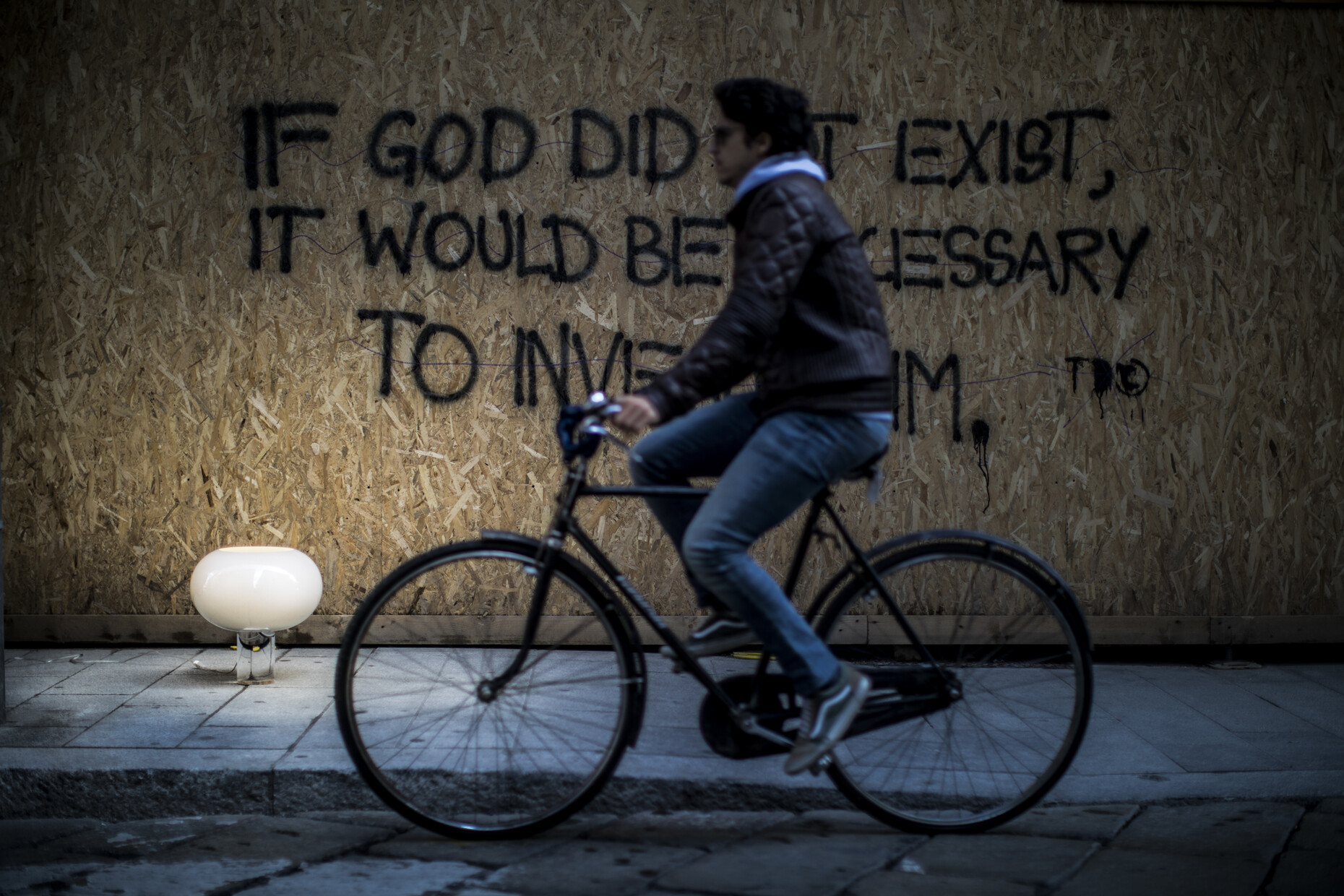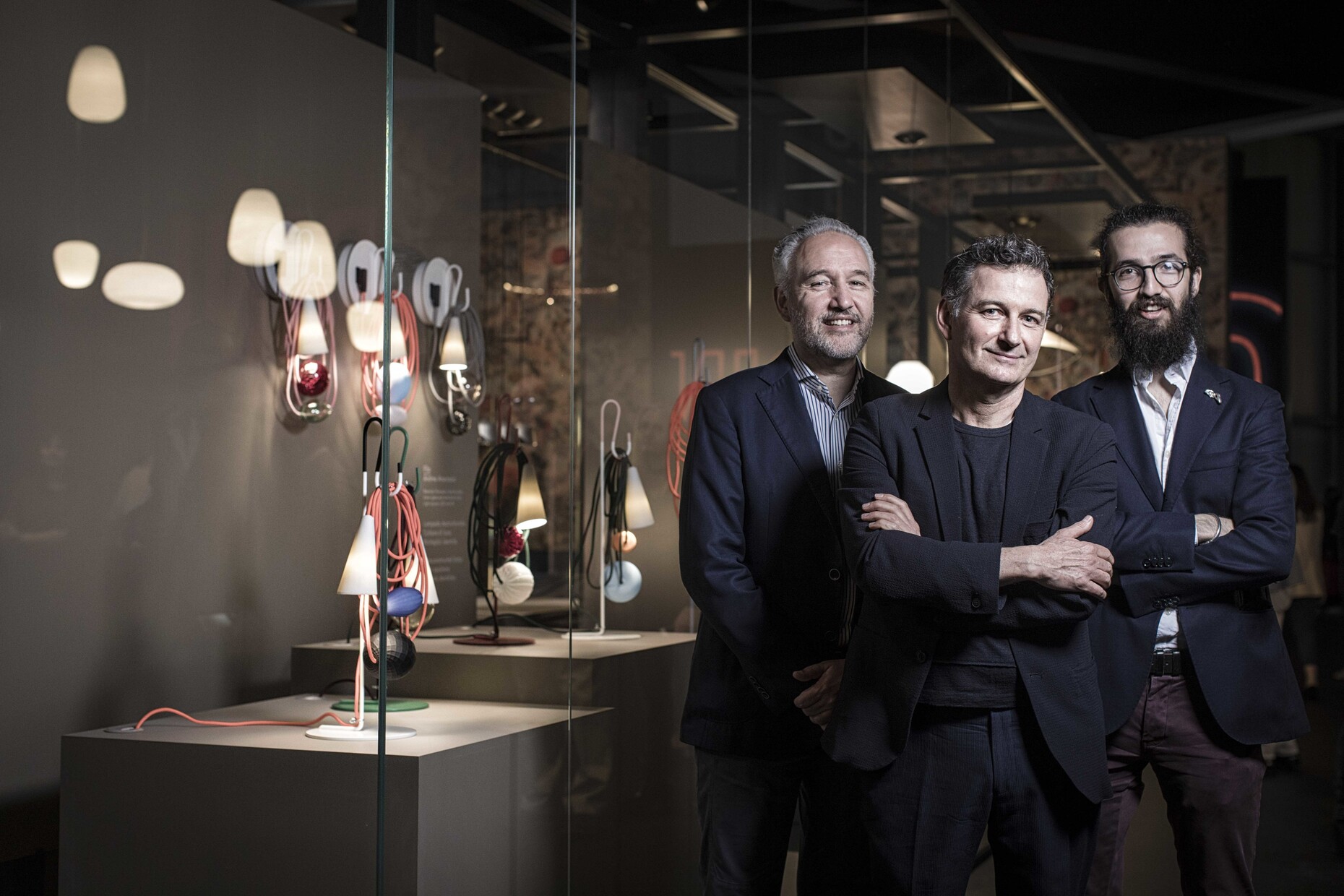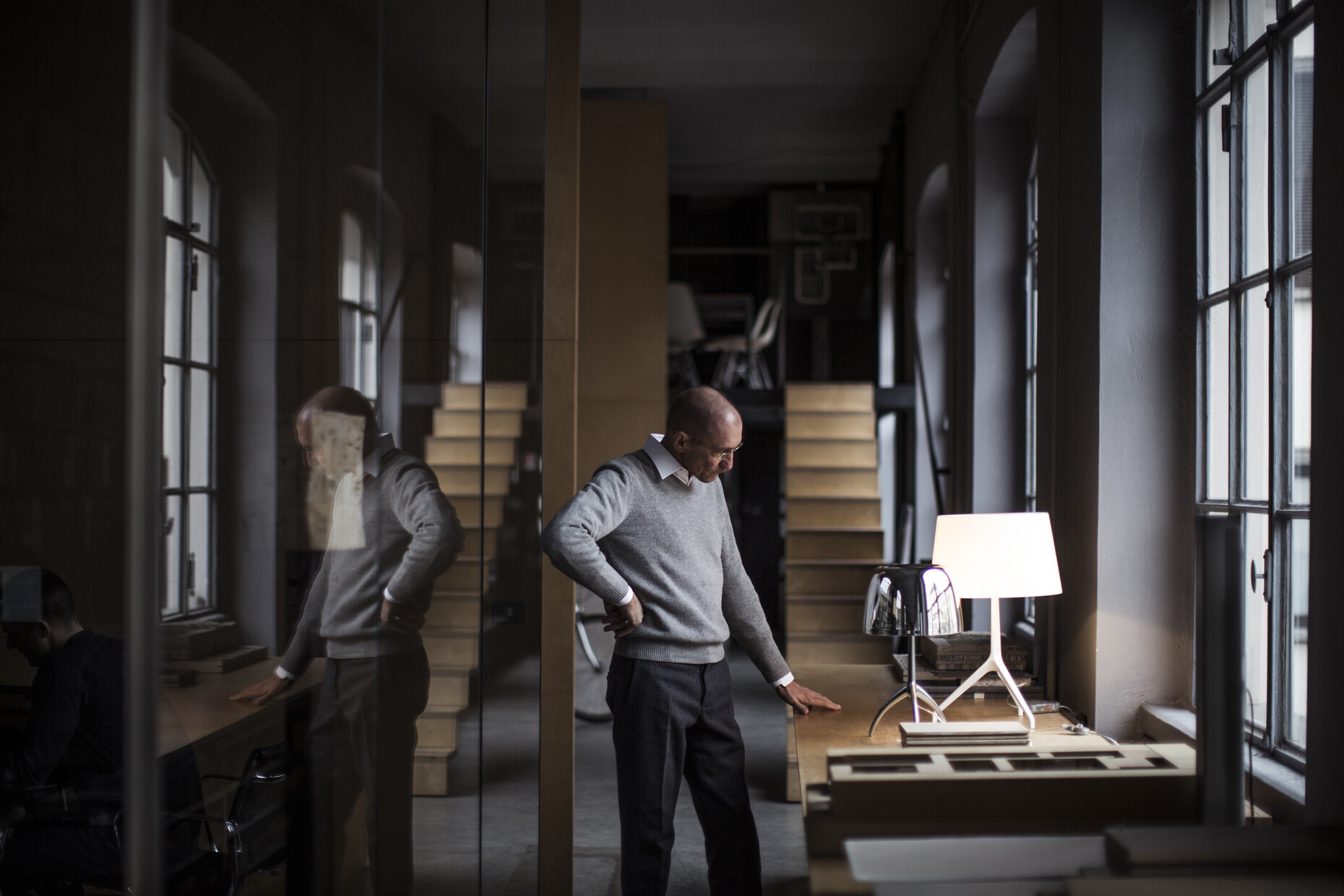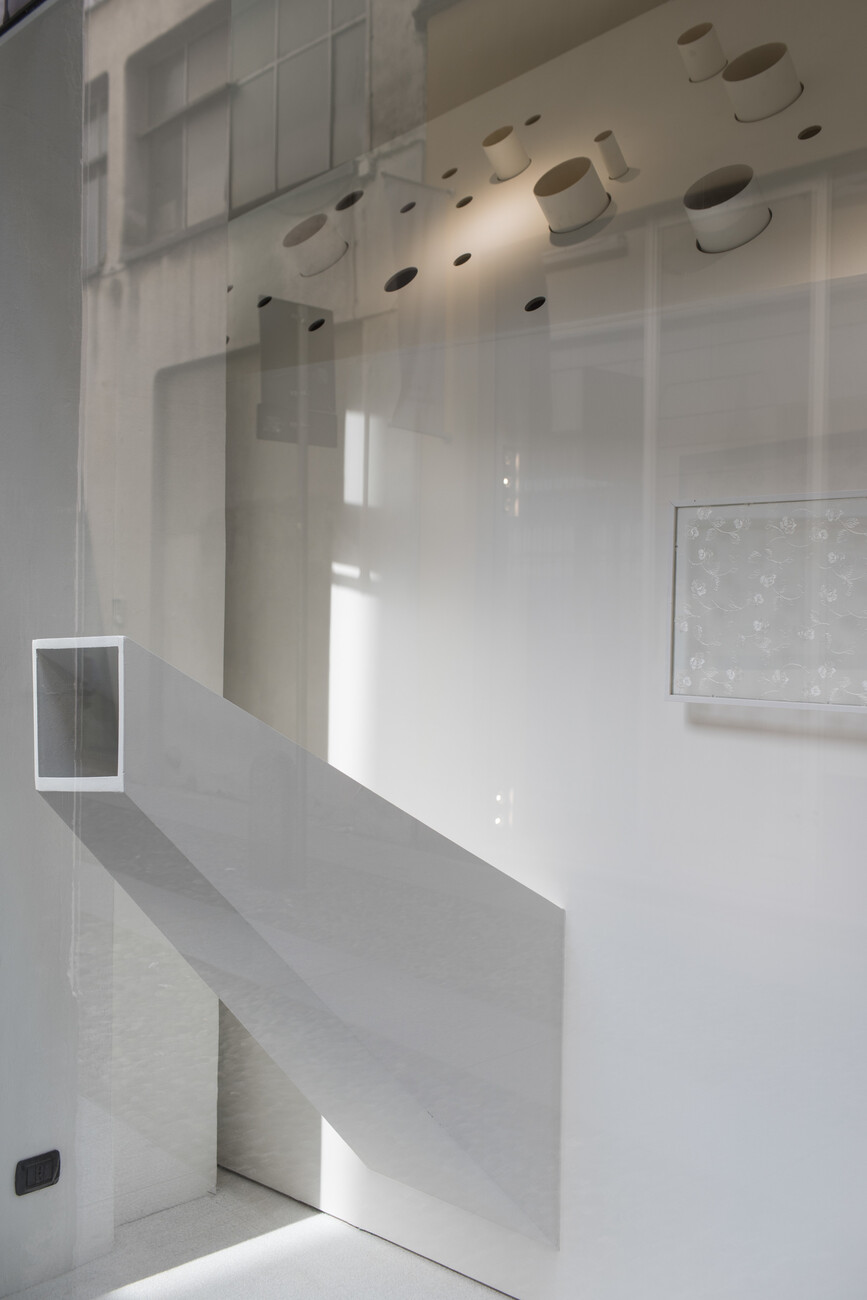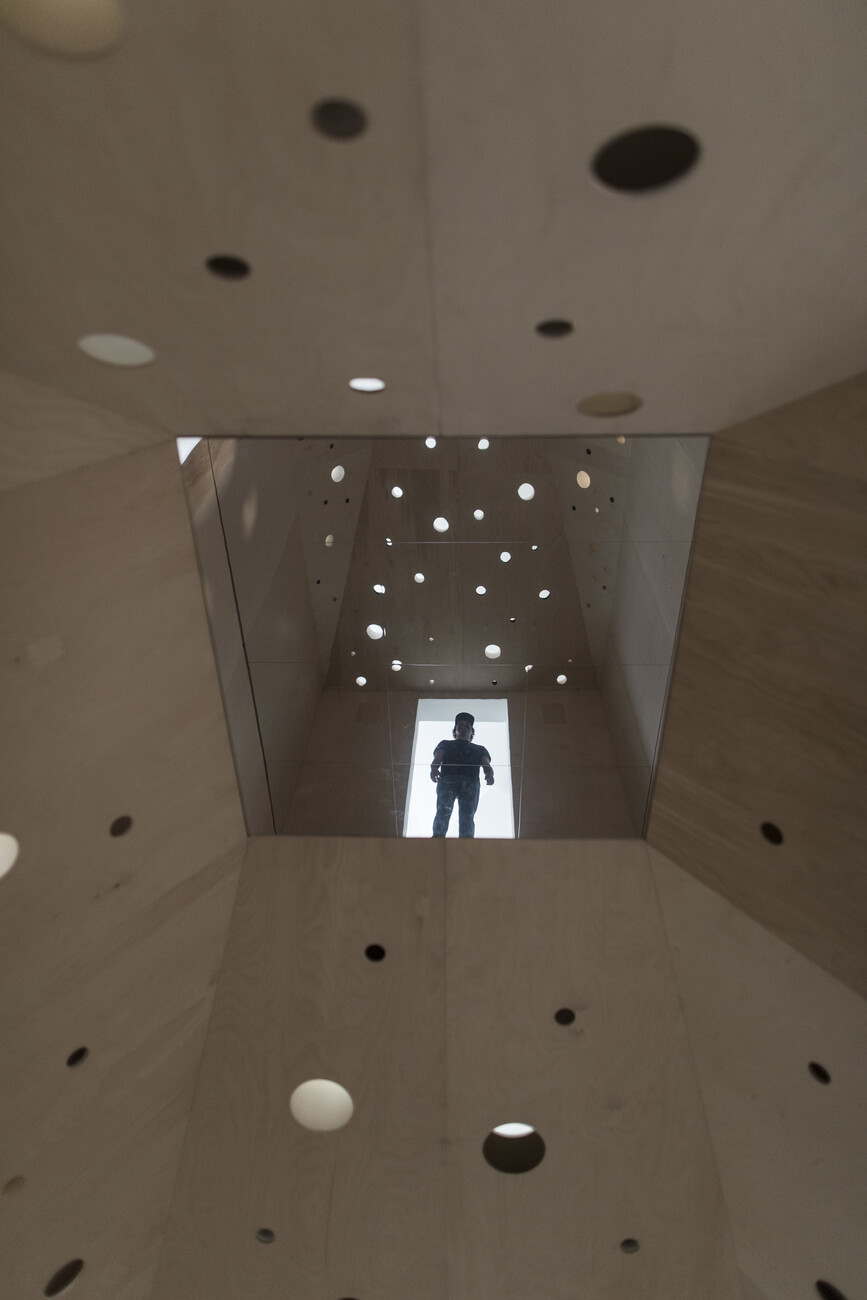Freedom drives us on to greater things
Carlo, Foscarini is far more than just a producer of beautiful luminaires: It has a cultural DNA, Foscarini publishes the Inventario magazine, is a patron of the arts and architecture, curates exhibitions. Why is all of that so important to you and how did it come about?
Carlo Urbinati: It’s hard to say, as it is so normal for us. We feel extremely privileged to work in the design sector and moreover with the medium of light, the best of all possible means of expression. Light always fascinates us. The idea is to give meaning to an object and thus directly create emotions and establish a connection between the heart and the eye. An attitude that simply always involves thinking outside the box, that is design as a discipline. Without this attitude we would be nowhere near where we are today.
And that is how such unusual products as “Filo” come to be?
Carlo Urbinati: Absolutely. We have always felt very connected to the world of visual arts. Which is precisely why we work with Andrea Anastasio, who designed the “Filo”lamp , as he is more of an artist and philosopher, but also with others, too. That’s the way we work and it surprises me that others find it surprising. (laughs)
As the publisher of Inventario magazine and as a patron of architecture and the arts, you invest a lot of time, energy and money in other disciplines. Is it worth it?
Carlo Urbinati: Most definitely. So many unexpected things happen. Look at this (Carlo takes a small book from the shelf). This here is a marvelous book with fingerprints by Andrea Anastasio. It tells a story that eventually became the starting point for “Filo”. A decidedly philosophical and artistic approach. The result is truly enchanting. With the Filo lamp you have everything that you would expect of a good luminaire and yet completely deconstructed and then put back together again. A quite unique, philosophical and special approach.
How did the collaboration with Andrea Anastasio come about?
Carlo Urbinati: We met him through Beppe Finessi, the editor-in-chief of Inventario, who had invited him to contribute to an exhibition of Inventario we were holding in Milan at Museum Poldi Pezzoli. We got talking, an intensive dialog ensued, and suddenly bang, we saw the project before us. Look here and you can see how the concept is already innate in his book – we simply had to liberate it
If one considers the sheer diversity of Foscarini products, it must be difficult to speak of a “red thread”. Am I right?
Carlo Urbinati: Absolutely, we definitely don’t have any so-called “family feeling” – that is an essential part of our approach. Take a look at the auto industry: A BMW is a BMW, an Audi is an Audi – you recognize that immediately. It’s the other way round with us. With each project we try to explore if there is a strong personality in it, a strong core. We explore that in close dialog with the designer in question. There is no rigid briefing. The product’s strength and quality first arises through dialog.
That’s not exactly the easy approach and somewhat unusual in the industry, is it not?
Carlo Urbinati: To be perfectly honest, on various occasions we have asked ourselves whether we needed this or that product for our portfolio, for the market, but that never worked. With just two exceptions, all of our luminaires have been the result of intensive interaction as regards ideas and concepts. Very often the shape and material of the final product is significantly unlike the initial idea. In developing a new product, we always start from the strong concept which we see inside the proposal and we then try to find the right material and the suitable technology for each product to be developed correctly in order to achieve our goal. We want to share visions. Of course that creates problems, too. How do I recognize the Foscarini brand in the products, where is the general style? Look, we work with personalities that are as different as Tom Dixon, Andrea Anastasio, Rodolfo Dordoni and many others. Is there a connection? Well, it is not always easy to spot it, but for us that is the freedom with which we approach the different characters of the designers and the products and try to realize their uniqueness as strongly and consistently as possible. In order in this way to trigger strong and direct emotions among viewers and users. That is what Foscarini stands for.
And which are the two exceptions?
Carlo Urbinati: They are “Filo” by Andrea Anastasio and “Lumiere” by Rodolfo Dordoni, where the very first draft design was pretty much the way the luminaire was then realized. Otherwise, there is essentially always a father and a mother for each product. The designer is the father, and Foscarini is the mother – or the other way round. It is an intense relationship, like sparring, an active dialog. For each project we first of all together explore whether there is a strong core that we can elaborate on.
And the designers join you down that path?
Carlo Urbinati: That is indeed a difficult balancing act, as usually a designer pops up with an idea and says something like: “This is going to be your next bestseller”. It sometimes takes an awfully long time until we can convince them that a quite different type of dialog is required. They often then feel they are not really being taken seriously, as they present us any number of ideas and we initially only concentrate on one. So we then have to create a climate of trust in which we respect the designer and his personality, and nevertheless manage to ensure it is a real Foscarini luminaire. That can take quite a while. Let me give you an example. Our collaboration with Eugeni Quitllet goes back a long way and he has now realized marvelous designs for us. At the beginning he had masses of ideas. Until then, he had only worked with Kartell in the field of luminaires and that was discernible. We said to him: Forget trying to present simple solutions to us. We need a new idea. And he said: What are you talking about? It was like culture shock. One day he then dropped by with the sketches for “Satellite”, that really special luminaire where the light fragment is “captured” between panes of transparent glass. That was the idea we’d been waiting for! And then the process started, it went back and forth. We had to solve many problems to connect the two layers of blown glass –the inner satin white globe of light with the outer transparent glass bell - without this being visible, meaning we had to conceal the connecting points. At the end we were all pleasantly surprised and happy by the result. That’s our approach. That is Foscarini!
So Foscarini is far more than simply the designer’s client?
Carlo Urbinati: Most definitely! We are a sparring partner, a project partner, a publisher, a curator – and somehow we are ourselves almost designers. I myself designed a company. In terms of the process that’s not all that different than designing a product. We need a strong presence, have to reveal how our design process works and give our statements credibility and relevance. If you wander around a trade fair such as the Euroluce, you will find virtually everything; it’s quite overwhelming. So we had to find a different way of doing things. Each project has its own character, and yet the links to the company must be visible. That’s not always easy at a trade fair or when realizing a catalog. We consider ourselves a kind of kaleidoscope in which the view of things constantly changes. I could speak for a whole week just about “Twiggy”, about how we developed it, about the meaning behind it, the small tricks we used to make it what it is. At a fair like the Euroluce you also need a frame bracketing things, visualizing the Foscarini brand. Things are similar with our Showrooms, in which the individual luminaires are part of an over-arching presentation.
To return to the Inventario magazine for a moment, with which you recently won the Compasso d’Oro.
Carlo Urbinati: Inventario is a veritable treasure trove of ideas and inspirations. When we started out with Beppe Finessi some years ago we were already thinking that we should go for the sort of quality that could win a Compasso d’Oro. And now we are, I think, the first company to win the prize in two such different categories, namely Industrial Design and Print Product. The sky’s the limit – that’s our motto
Another milestone I fondly remember was the installation for the “Lumiere” jubilee last year for the Milan Salone at the Triennale.
Carlo Urbinati: Yes, that’s a good example of our approach. We wanted to celebrate the 25th anniversary of this bestseller without getting lost in historicism. Ingo Maurer would never do that either! We wanted to show what had happened in the world in those 25 years and on 25 different screens presented very emotional scenes from each of those years. From the fall of the Berlin Wall or Ayrton Senna’s death to the emotional scenes in his native Brazil through to the emergence of the Internet, we always focused on things that touched people’s hearts. The “Lumiere” stood in the middle of the installation as a timeless and elegant observer, as it were. The freedom to do such things drives us on to greater things. The freedom not to have to get out of breath trying to catch up with the trends and fashions when it comes to creating a specific image for the market, but constantly to challenge ourselves creatively and test our limits. That we really thrive on.
